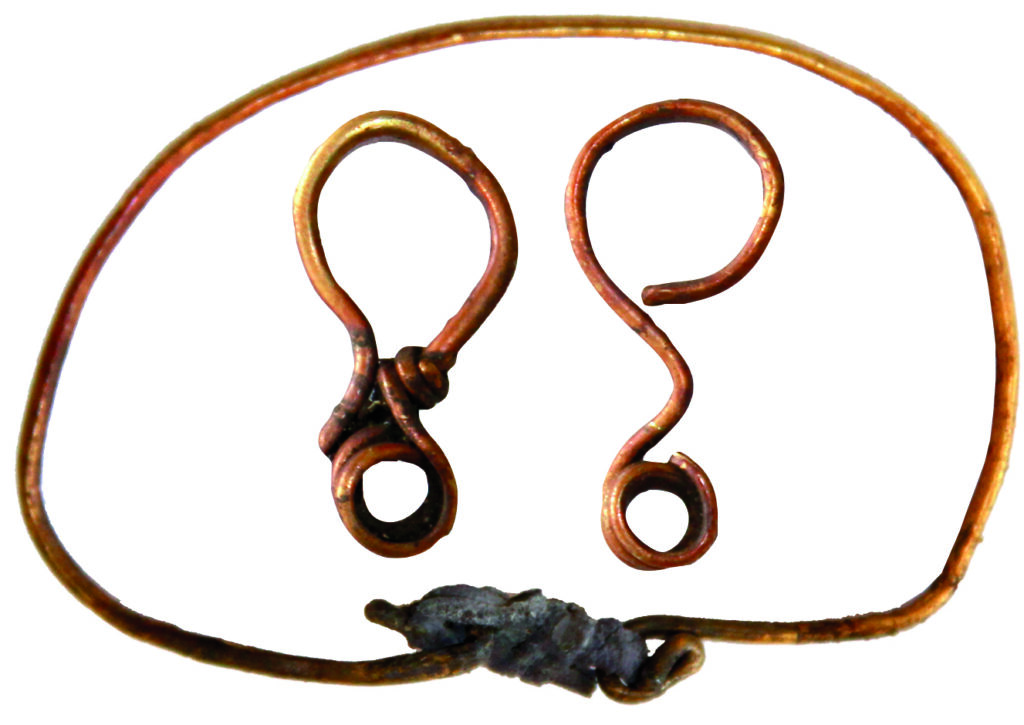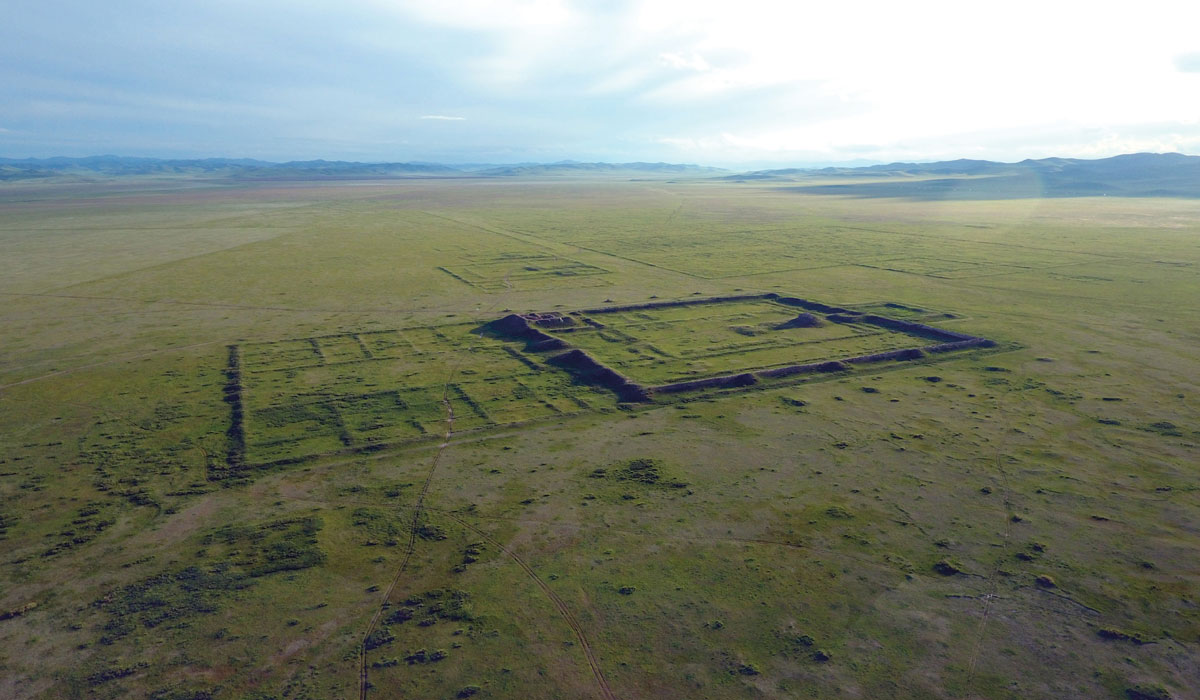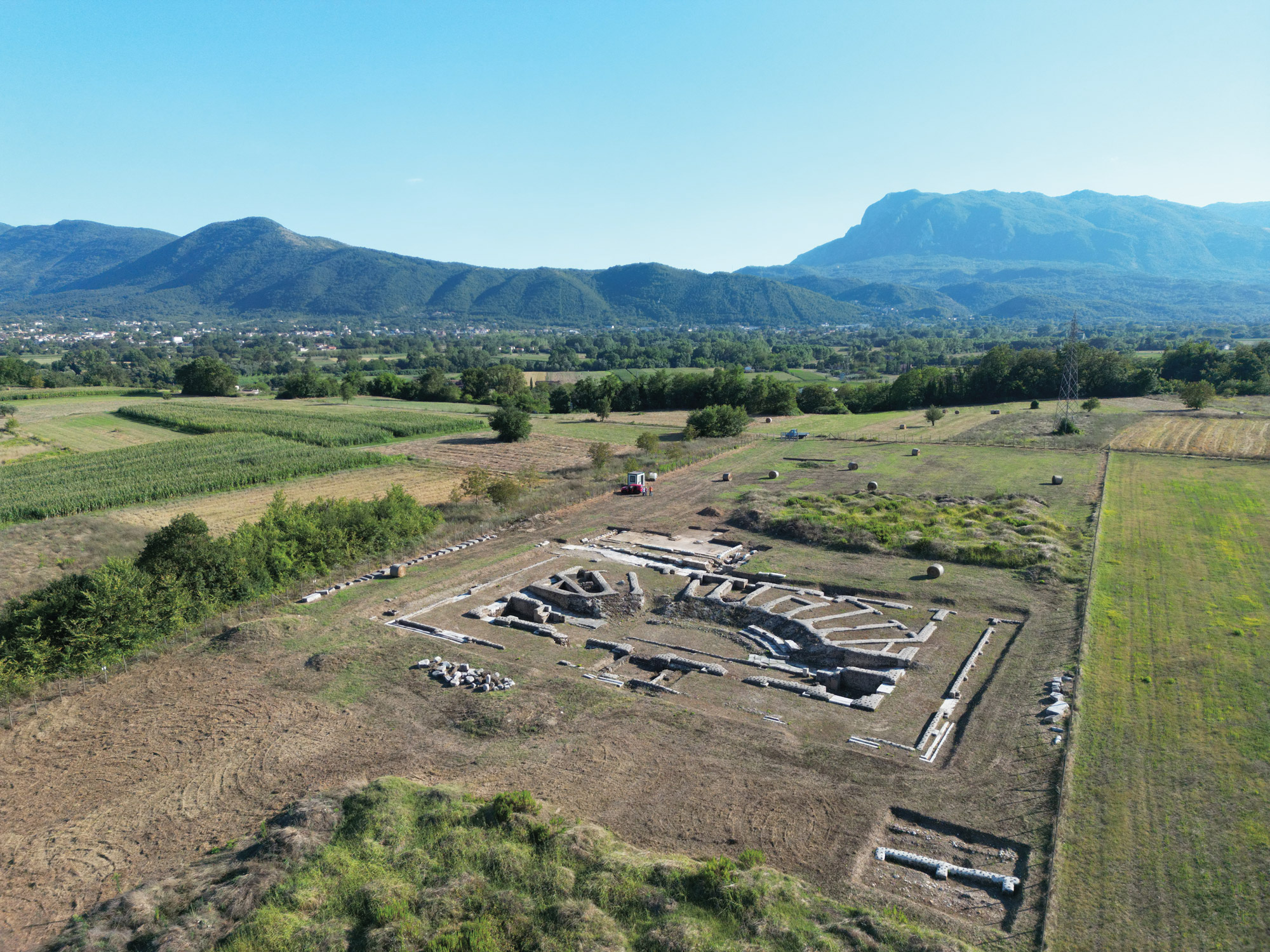
Within the earthen walls of a fortress in Mongolia’s Dornod Province, archaeologists discovered the twelfth-century burial of a woman who was part of a nomadic group from the Khar Nuur region. She died between the ages of 40 and 60, was buried wearing a yellow Chinese silk robe, and was covered in a thin layer of bark. A team including archaeologists Gideon Shelach-Lavi of the Hebrew University of Jerusalem and Amartuvshin Chunag of the National University of Mongolia excavated the woman’s narrow wooden coffin, which was made from Chinese mulberry trees. Her rich grave goods included additional Chinese silk textiles, gold jewelry, beads, a bronze vessel, a silver cup, and an iron knife. According to Shelach-Lavi, the value and far-flung origins of the objects testify to the woman’s high status.
The researchers radiocarbon dated her bones to between 1158 and 1214, after the construction of the fortress. The fortress was part of a series of defensive fortifications extending 450 miles from the Onon River Basin in Mongolia and Russia to the foothills of the Great Khingan Mountains in northeast China. These fortifications were built and later abandoned by the nomadic Liao Dynasty (a.d. 907–1125), which ruled large swaths of Siberia, Mongolia, and northern China. Shelach-Lavi hypothesizes that the Khar Nuur nomads may have chosen to bury the woman at the site to bolster a connection to the Liao. “The fortress held symbolic power,” he says. “They may have used it as a landmark, as a way to take ownership of the past.”












